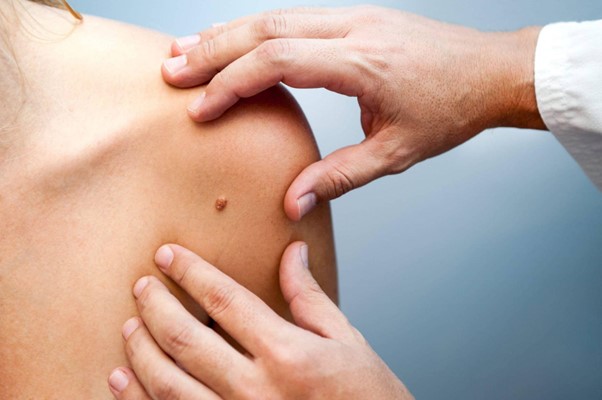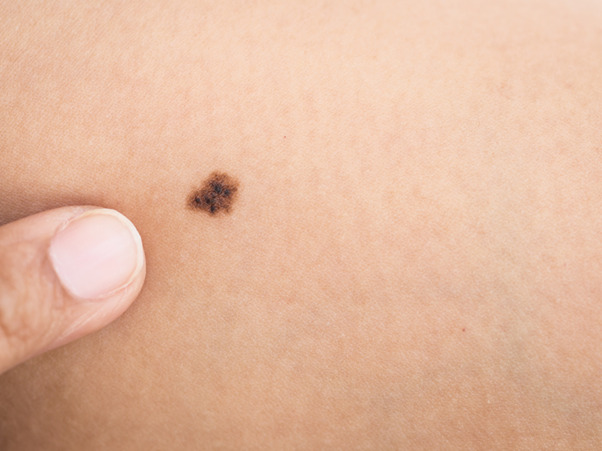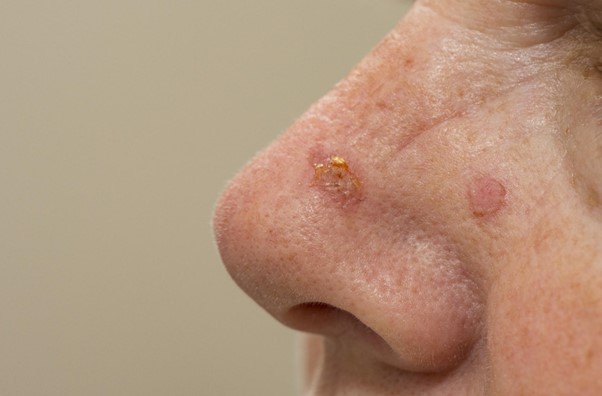A Comprehensive Guide to Understanding and Treating Skin Lump-Related Cancers
Skin Lump and Cancer: Understanding the Connection and Treatment Options

Skin lumps are most often caused by benign (non-cancerous) growths such as cysts, lipomas, or dermatofibromas. However, some skin lumps can be a sign of a serious condition such as skin cancer.
Skin cancer is a major health concern, and it is important to be aware of the risk factors and symptoms in order to get a timely diagnosis and treatment.
In this article, we will discuss the connection between skin lumps and cancer, as well as different types of skin cancers, who are most at-risk for developing them, how they are diagnosed and treated, potential prevention methods, and tips for taking control of your health.
What Are the Different Types of Skin Cancers?
Basal cell carcinoma (BCC)
Basal cell carcinoma is the most prevalent type of skin cancer, and it accounts for more than 80% of all skin cancer cases. BCC occurs in the basal cell layer of the skin and primarily affects areas that are frequently exposed to the sun, such as the face, neck, and scalp.
This skin cancer develops slowly and does not typically spread to other parts of the body; however, it gradually grows over time, making it critical for early diagnosis and treatment.
Squamous cell carcinoma (SCC)
Squamous cell carcinoma is the second most common type of skin cancer, with slightly less than 16% of all skin cancer cases. SCC typically affects the squamous cells, which are located in the middle layer of the skin.
It occurs in areas of the skin, exposed to the sun, such as the face, neck, lips, ears, and hands. This type of skin cancer develops more quickly than BCC but should not be taken lightly.
Melanoma
Melanoma is the most dangerous type of skin cancer, despite accounting for just 4% of all skin cancer cases. It often starts as a mole but grows and spreads aggressively as it invades the surrounding tissues.

Melanoma can develop in any part of the body, including areas that are not directly exposed to the sun. It is crucial to diagnose and treat melanoma at an early stage to have an effective cure.
Merkel cell carcinoma
Merkel cell carcinoma is a rare and aggressive type of skin cancer that impacts the Merkel cells in the dermis skin layer. It presents as firm, painless nodules or lumps that might have red or bluish coloring.
Due to its quick spreading, it might spread to other parts of the body, making it crucial to pursue early diagnosis and treatment.
Adnexal carcinoma
Adnexal carcinoma encompasses a group of rare skin cancers that originate from the sweat glands or hair follicles. These skin cancers are not as popular as the other types, but they are just as vital in knowledge.
They generally appear as small, painless growths on the face, scalp, or neck, and it is essential to identify them early and treat them.
Who are Most at Risk for Developing Skin Cancers?
Anyone can develop skin cancers, however, certain individuals are more likely to be affected than others.
People with fair skin, blue or green eyes, and red or blonde hair are at an increased risk for developing skin cancers due to their lack of natural protection from the sun’s UV rays.

Additionally, people who have a history of excessive sun exposure, use tanning beds regularly, have had previous skin cancer diagnoses, or have certain genetic conditions are more likely to develop skin cancers than those without these risk factors.
Diagnosing and Treating Skin Cancer
If you notice a lump or lesion on your skin that is different from anything else, it is important to seek medical attention from the best plastic surgeon in Singapore as soon as possible for diagnosis.
Your doctor can examine the area and order additional tests, such as a biopsy, to determine if it is cancer. If skin cancer is present, your doctor will discuss the treatment options with you and create an individualized plan based on your specific situation.
Treatment can include topical medications, radiation therapy, chemotherapy, or surgical removal of the affected area.
How to Prevent Future Occurrence of Skin Cancer
The best way to prevent skin cancer is through proactive prevention.
This includes avoiding prolonged exposure to ultraviolet radiation (UV) from the sun or tanning beds, wearing protective clothing and sunscreen when outdoors, and having regular dermatologist check-ups.
Additionally, it is important to be aware of any changes in existing moles or other marks on the skin. If you notice any new or changing lumps or lesions, contact your doctor right away.
Conclusion
Skin lumps can be a sign of something more serious, such as skin cancer. In order to stay healthy and reduce the risk of developing skin cancers, it is important to understand the risk factors and take proactive prevention methods.
If you notice any changes in your skin, seek medical attention immediately for diagnosis and treatment. By taking control of your health today, you can reduce your risk of developing skin cancers in the future.
Learn more.